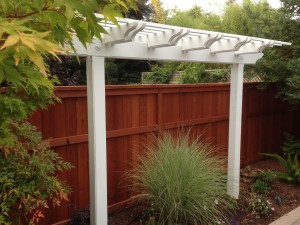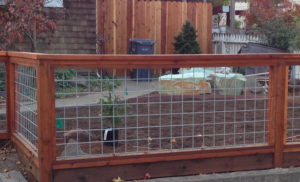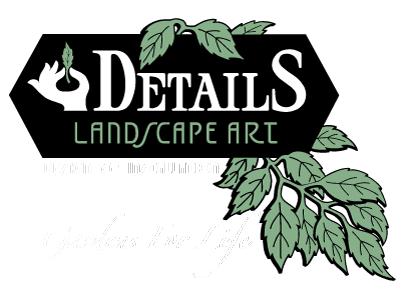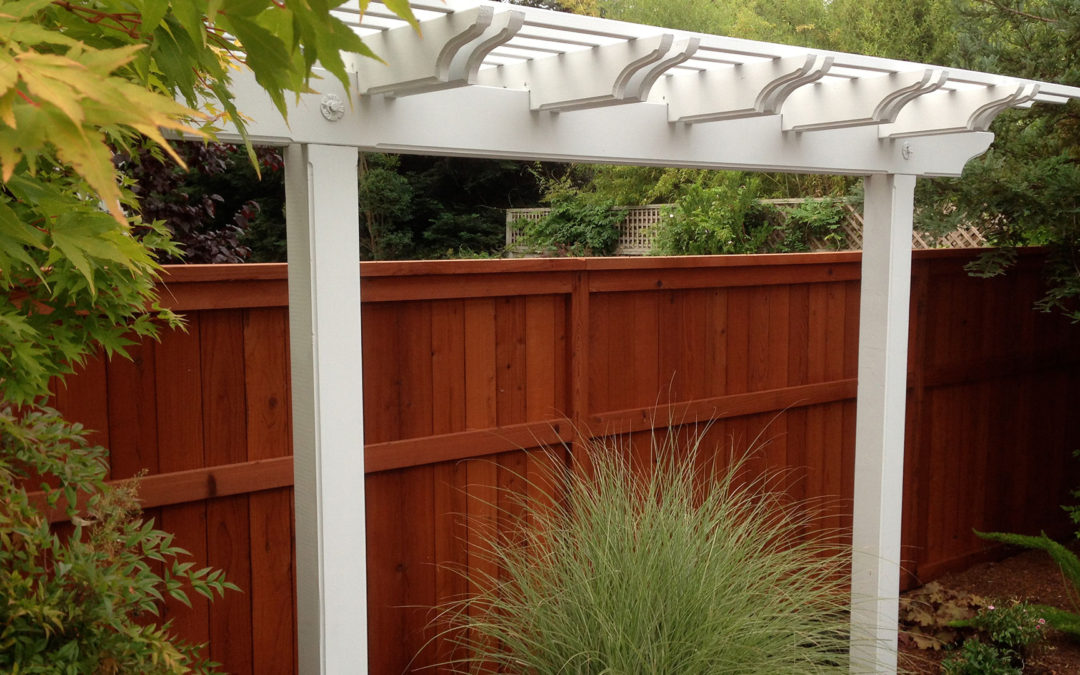Most gardens in the North Bay have fences bordering their property and separating one house from the next or the one behind, especially in subdivisions that are prevalent in our area. Land is expensive, lots are small, and some sort of privacy is needed when we are so close to our neighbors. There are a multitude of fence styles, ranging from very basic post and rail fences to more elaborate construction. There are also a variety of materials with which to build fences.
At Details Landscape Art, a Petaluma landscape contractor, we build simple yet solid fences. Our ‘go to’ six foot redwood fence is constructed with 4 x 4 posts, three horizontal 2 x 4 rails in front, 1 x 4 horizontal rails in back, and 1 x 6 vertical con heart fence boards sandwiched in between, and a 2 x 6 redwood cap on top. Virtually no nails or screws are visible, and when stained, makes a beautiful sturdy looking fence. A beefier version is available, using 6 x 6 posts, 2 x 6 and 1 x 6 horizontal rails, and a 2 x 8 cap. The key feature to these fences are the third rail. Too often we see cheap post and rail fences with a top rail and a bottom rail. After several years it is not uncommon to see the fence boards bow in the middle from lack of support.
We have also built several horizontal redwood fences lately, with the posts set a little closer – six feet, and either butted the horizontal fence boards or spaced them an inch or so apart. 
Another common fence seen in gardens designed and built by Details Landscape Art is the woven wire or welded wire fence, either 3 feet tall, 4 feet tall or 6 feet tall. Again posts are 4 x 4 redwood, 2 x 4 rails, woven wire stretched taut, and capped with a 2 x 6. The posts are set in concrete, and usually spaced six feet apart. As opposed to a redwood fence where we space posts eight feet apart, we prefer the less rigid woven wire fence to have a bit more support, so we space the posts a little closer.
More recently we have been building hog wire fences. With 4 inch by 4 inch openings, these rigid panels come in either galvanized gray or powder coated black, and are available in three feet by eight feet or five feet by six feet panels. If we’re building a three foot high hog wire fence, we set redwood posts in sixteen inches of concrete and three feet three inches above ground (bottom of wire is up off the ground a few inches. A redwood two by four bottom rail is screwed into each post, and the hog wire is stapled to the fence posts and the bottom rail. A two by six redwood cap is screwed down on top of the posts. Then we frame out both sides of the hog wire with two by twos which are screwed to the posts and the rail and the cap, ‘sandwiching’ the hog wire in between.
These fences are see through and are useful in situations where the view beyond the fence is desirable, yet privacy and security are a concern.
As with all our work, materials are handpicked and fine craftsmanship is apparent.

